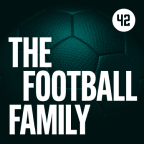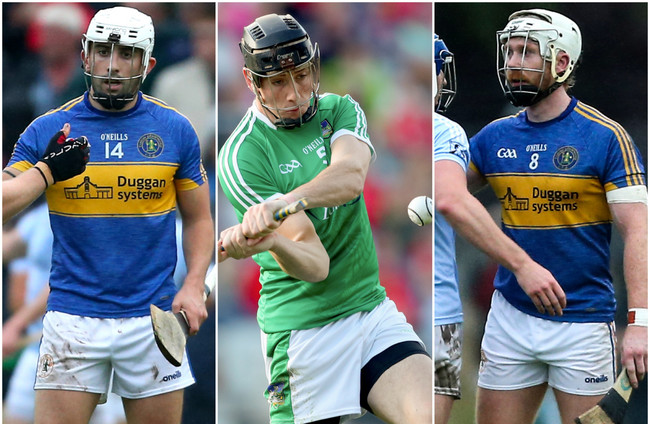BY THIS STAGE, Richie Bennis has the knees almost wore out of his good suits with the sheer number of functions he has attended to honour the Limerick team – his Limerick team, some might say – of 1973.
In the final, Bennis hit 10 points from midfield, his old-fashioned roll-lift and strike helping him on the way from frees as they demolished Kilkenny 1-21 to 1-14.
As soon as they get a spare moment, Patrickswell will honour their famous sons. Fifty years ago they had Richie in midfield, his brother Phil who played right half-back, Sean Foley who was on the other wing, and Frankie Nolan, the left corner-forward.
All of them remain hale and hearty. “We think we are anyway!” quips Bennis.
“We don’t know when the function will be for the club. Probably not until next year as we are after having a lot of nights out. The Limerick Men’s Association honoured us last Friday when we were above in the Red Cow for a session,” he chuckles.
“We have been honoured for three or four different occasions by now!”
When it does happen, Patrickswell will be shining the spotlight in several different directions. Having a Hurler of The Year is an incredible honour for any unit of the association; having the last three is unprecedented. The greatest recruiting tool any club could have is Cian Lynch, Diarmaid Byrnes and Aaron Gillane.
When Lynch won in 2018, it was all new to the club and the county. His uncle Ciaran Carey had been commonly accepted as one of the greatest players of his generation, but to win this individual honour, you need to be constantly appearing in finals.
That hasn’t been a problem for this generation of Limerick hurlers and it has led to Lynch winning his second Hurler of the Year in 2021, Byrnes taking it in 2022, and Gillane claiming it this year.
Since the introduction of the Hurler of the Year award, 21 clubs have been honoured with their representatives winning.
They have mainly came from recognised clubs within their county, though Gearoid Hegarty’s triumph in 2020 was a rare win for a club — St Patrick’s — not at the cutting edge of senior hurling.
In all, Patrickswell have had the honour four times now. They are one behind Ballyhale who have had Henry Shefflin (2002, 2006 and 2012) along with Michael Fennelly (2011) and TJ Reid (2015).
The only other club to bring home the award more than once is Waterford’s Mount Sion with Tony Browne (1998) and Austin Gleeson (2016).
As young lads, Bennis coached all three of Patrickswell’s latest superstars.
He had Lynch and Gillane at U14 level. Even back then, they had a flair for self-expression. The flicks between the legs and the dummies that Lynch wields as a glorious weapon were there from when he started.
“He’d doing that stuff since he was 12 years of age. He could always try anything with the ball. There used to be video up online from when he was a young fella, it was ten minutes of all the things he could do with a hurley and a ball.”
Later on, he worked with Byrnes at U21 level.
His knowledge of all three goes back generations anyway. Long before Bennis’s prime 50 years ago, Gillane’s grandfather, Batt Gillane, was a founding member of the club when they got up and running in 1943.
They won their first senior championship 22 years later and have become the most decorated club in the Limerick championship with 20 wins, as well as being runners-up ten times.
“Any time you see them around the place, you wouldn’t know they would have ever achieved anything,” he says.
“The county commitment is time-consuming. But Diarmaid and I would have the odd chat and I would be pushing him, asking him if they were in the middle of doing a whole load of training and whatever.
“And he would say that if they weren’t out on the pitch together, they would be in the gym anyway, as they are that way minded.
“They don’t think of it as an effort. They think of it as a way of life.”
Bennis thinks back to his own playing days and recalls gathering up for six or seven weeks before the Munster championship to get prepared. Sometimes league campaigns came and went without any meaningful training sessions.
“At that time, we hadn’t the same distractions as them. We hadn’t much television; probably two or three stations. We had no mobile phones. They are a disaster in this day and age because you can’t turn or twist without them being in your face,” he says.
“If they were there in our time, we would have gotten a fair few headlines, I would have said.
“We used to train on a Tuesday, a Thursday, and then a Sunday morning. Not that much different. But then our training was concentrated on a shorter time.
“We used to start training just four or five weeks before a match. But now they are back training already.”
Just this week, their conditioning expert Cairbre Ó Cairealláin talked about how they lap this hard work up. It’s brought out in the labs and gyms of Limerick.
But so much of it is hewn from Patrickswell.







